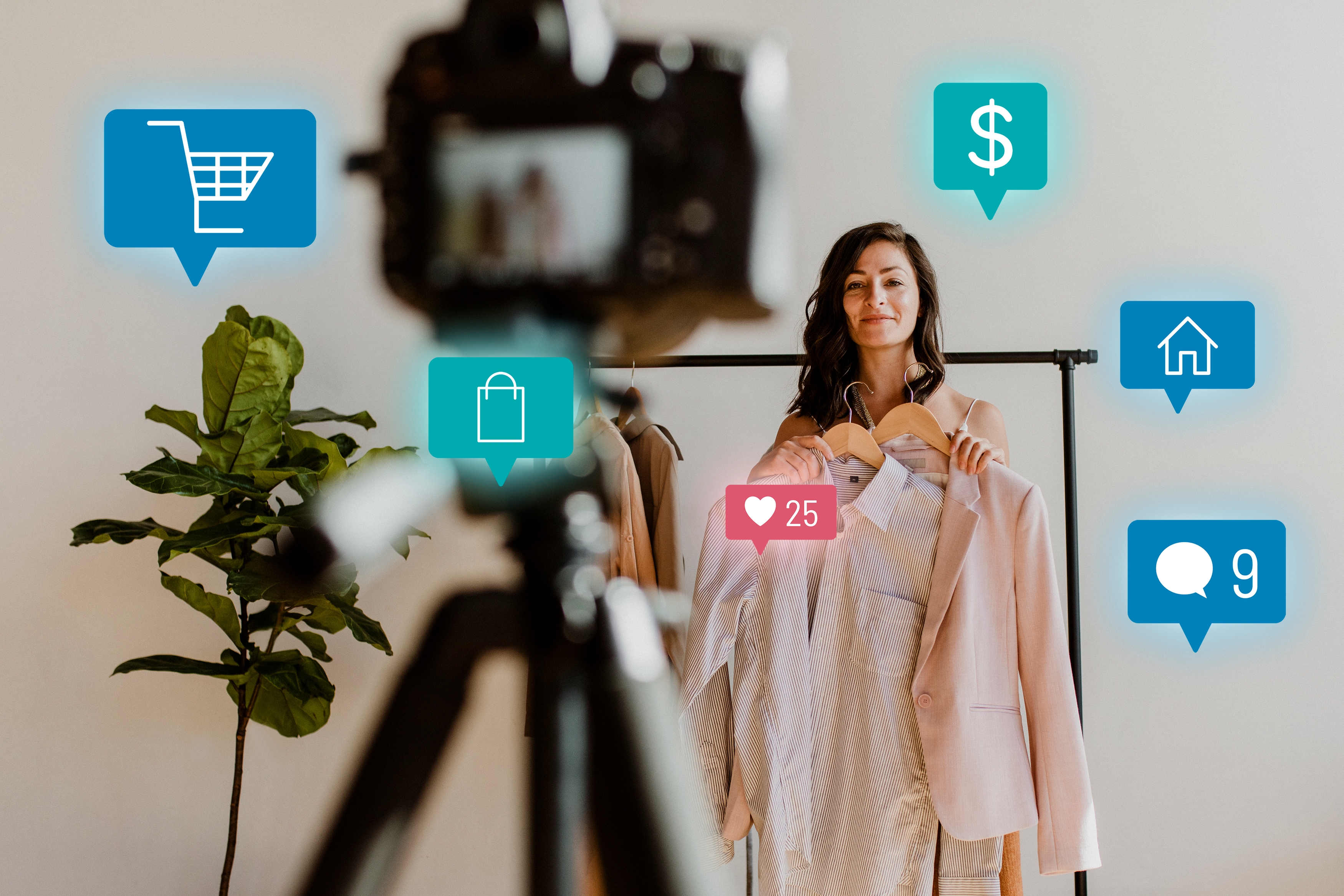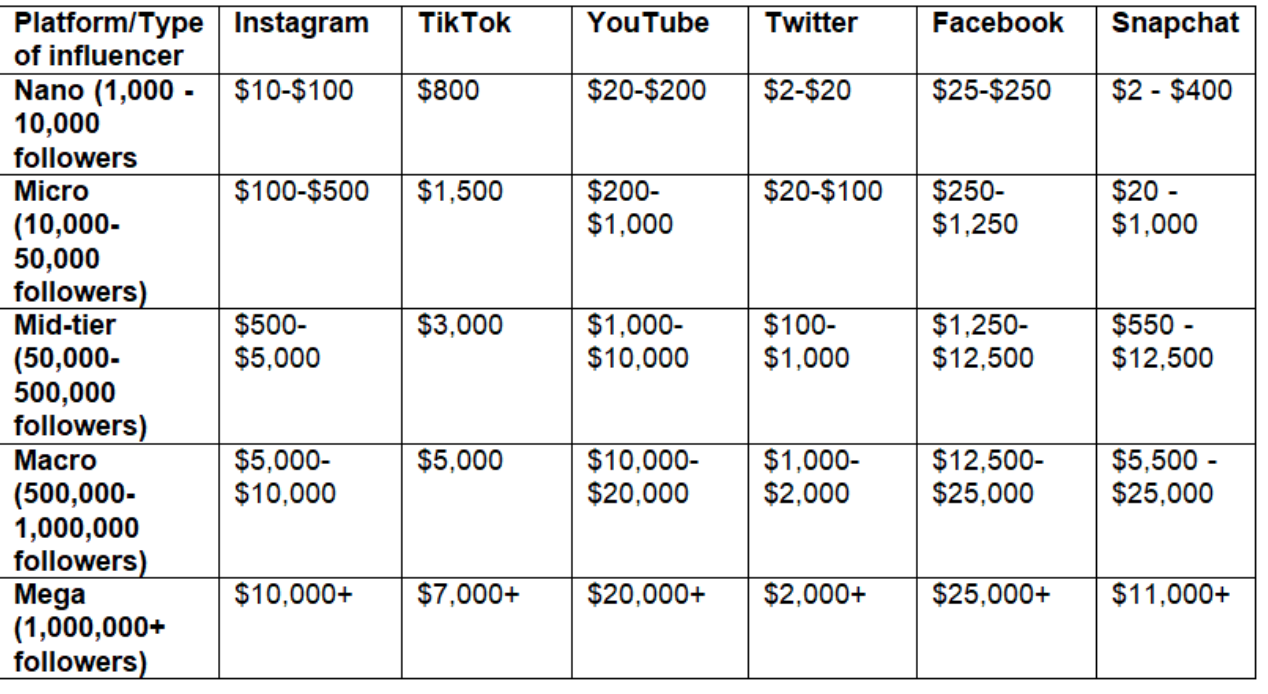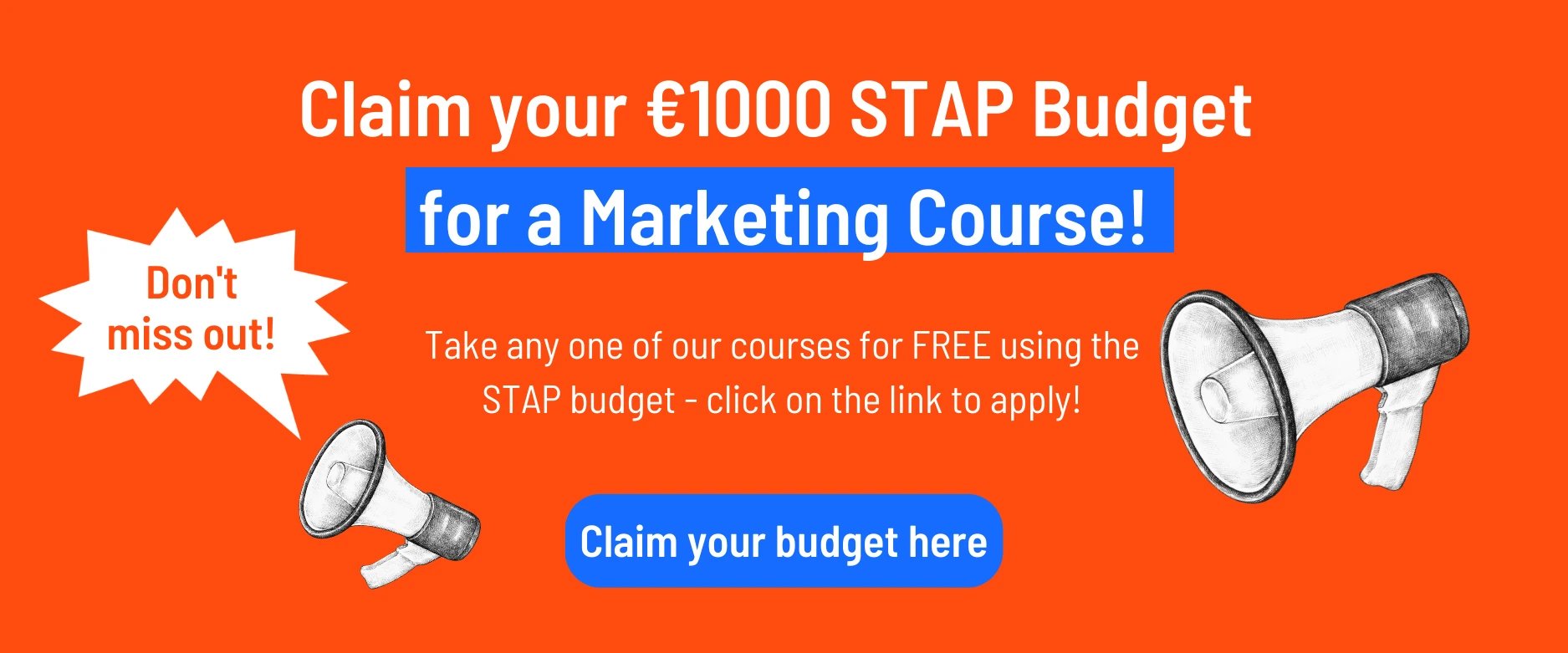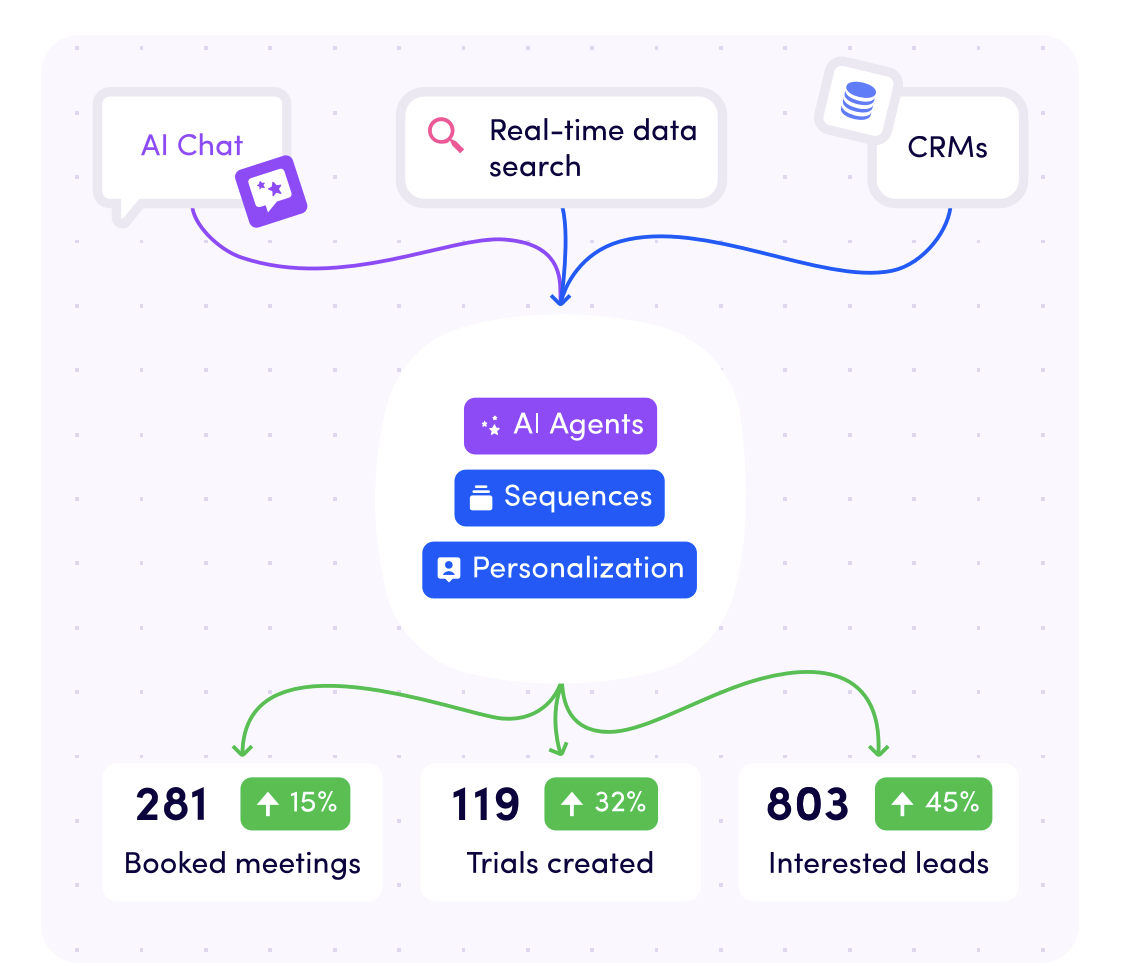Influencer Marketing: How To Build A Winning Strategy

Updated on 05-06-2024.
In recent years, the explosion of social media capturing consumer attention has been a challenge to keep up with. Yet, it has also presented opportunities for businesses to engage their audience in new ways and achieve exponential growth.
The power of social media is best understood in its massive reach potential.
New marketing strategies also mean new ways to build, engage and grow audiences.
And, one such method has proven to garner attention and build trust with dedicated followers, almost immediately.
Together, we'll uncover the influencer marketing industry.
If you want to jump to a specific topic, use the table of contents below! 👇
1. What is influencer marketing?
2. How does influencer marketing work?
3. The impact and remarkable rise of influencer marketing
4. Creating an influencer marketing strategy
5. How to manage influencer marketing
6. The do’s and don’ts of influencer marketing
What is influencer marketing?
Suppose we define an ‘influencer’ as someone with a large, dedicated online following who is deemed an expert in their niche.
In that case, influencer marketing is a business collaborating with that person, to promote a product or service.
An influencer’s endorsement can reach many people and boost sales.
Why?
Because they trust their followers, whether through social media, blogs, or other channels.
So how effective is influencer marketing?
Well, influencer marketing has steadily built its value as a legitimate marketing tactic over the last few years. And, it will keep growing.
How does influencer marketing work?
Rather than putting out content that your audience consumes organically, businesses will pay or hire an influencer to promote their content for them.
Think about celebrities or high-profile public figures like Kim Kardashian or Dwayne Johnson.
These stars have millions of social media followers eager to find out what the next big thing is.
Due to their expertise or ambassadorial roles in their respective fields, people tend to inherently trust their recommendations.
There are, however, different categories of influencers (which we’ll touch on later) as not everyone has high-profile celebs on speed dial.
And what success means, depends on numbers and your priorities.
At a basic level, influencer marketing can be compared to having a friend recommend a great restaurant to you.
So this prompts you to book a visit the following weekend.
This highlights another marketing truth.
Word of mouth is still the most powerful form of marketing, if, you trust the person referring you.
With influencer marketing, that ‘friend’ is a highly respected figure telling thousands or even millions of fans that your product is the best thing out.
There’s a lot of power in that.
This is why so many brands and businesses adopt the influencer marketing strategy into their marketing mix.
So, let's break down how to build an influencer marketing strategy step-by-step and provide answers to your burning questions.

The impact and remarkable rise of influencer marketing
Influencer marketing has seen a phenomenal rise in 2024.
Transforming from a niche strategy into a cornerstone of digital marketing.
The shift is being influenced by the growing influence of social media platforms.
Particularly Instagram, which remains a strong presence in the influencer industry.
The rise of influencer marketing is reshaping how brands approach advertising.
Traditional ads are losing ground to more personal, relatable content delivered by influencers.
Consumers are more likely to trust a recommendation from someone they follow and admire than a standard advertisement.
With over 2 billion active users, Instagram remains at the forefront of this trend.
The platform's visual-centric nature makes it ideal for influencer collaborations.
Furthermore, Instagram ranks among the top 12 most-visited websites globally, with a staggering 6.89 billion visits each month.
While Instagram leads the way, TikTok is also experiencing rapid growth and is not far behind.
With its highly engaging, short-form video content, TikTok has become a powerful platform for influencer marketing.
Brands are increasingly recognising the potential of TikTok to reach younger, more diverse audiences.
If you haven't yet explored TikTok for your marketing efforts, now is the time to start.
The platform's unique algorithm and vibrant user base offer immense opportunities for creativity and brand engagement.
Creating an influencer marketing strategy
As with all marketing approaches, you’ll need to take the time to understand the best way to connect with your target audience.
And in the case of influencer marketing, determine who can do this best for your brand.
Determine your goals
At its core, influencer marketing can achieve two primary goals:
- Expand your reach to new audiences
- Increase sales
But to be effective, it’s better to define what it is exactly you want to accomplish.
It might be to reach more people from an existing audience or to find new ones.
You might want to drive traffic to your page or increase sales.
At one point or another, you’ll likely want all of these outcomes.
But the key to succeeding in any one of them is to hone in on a specific goal and create a strategy around it.
Research your target audience
To help understand who will benefit most from the marketing strategy you can create buyer personas.
A buyer persona will define your brand’s ideal customers.
Their characteristics, needs and desires, and the pain points your product or service is claiming to solve.
For example, you might want to use influencer marketing to target a new, younger demographic of say 18-25-year-olds.
Then, introduce them to your product to gain more followers on Instagram.
Finding an influencer and how much they cost
We made the point earlier that not everyone will have access to high-profile figures on speed dial.
Influencer types can be categorised by their total amount of online followers:
- Nano-influencers: 1,000 - 10,000 followers
- Micro-influencers: 10,000 - 50,000 followers
- Mid-tier influencers: 50,000 - 500,000 followers
- Macro-influencers: 500,000 - 1,000,000 followers
- Mega-influencers: 1,000,000+ followers
Depending on what it is you’re offering, there are different ways to approach hiring an influencer.
In general, the bigger the following they have, the more you’re going to pay.
But that isn’t necessarily always the case for celebrity influencers.
Some influencers will be happy to work on a commission structure.
For example, for every ‘x’ amount of followers or products sold, they take the ‘x’ amount as a commission.
Or for the nano or micro types, you might strike a deal whereby you can offer free products or subscriptions to your service in exchange for content creation.
The key to choosing the right influencer is to make sure their goals align with yours.
If they already advocate for similar brands, are considered experts in your niche, and have consistent and dedicated online communities, these are the people who will fit your strategy best.
There are social listening tools available that can help you understand where and how your audience interacts with brands and topics too.
Once you have narrowed down your list of potentials, start reaching out directly and sharing your vision.
Influencers are professional content creators so it’s a good idea to approach them with a collaborative attitude built on mutual respect.
Rates of pay can vary wildly as there are many factors involved, including the types of influencers.
But in the image below, we can see a typical guide for influencer costs, based on their follower count.
How to manage influencer marketing
As with any marketing effort, you’re expected to deliver results, and data, that support your campaign.
It needs to work to justify the investment.
Influencer marketing differs from other strategies due to the direct partnership you share between your brand and the person promoting it.
It’s not just a case of defining the goals, automating a process and measuring the results.
It requires a more human touch.
Much like hiring an employee, you want to seek out collaborators who are in it for the long term.
Both the business and influencer’s ideologies should align, and both parties need to feel value in the relationship.
So, if they feel a brand isn’t showing support or allowing them to do what they do best, they will be tempted to drop out.
Which leads us to trust.
You have to trust that the influencer you’ve chosen will represent your brand values and create winning content to promote it.
As with an employee, if you pay them fairly and communicate often and openly, so little is left to interpretation, they’re infinitely more likely to continue working for you.
When it comes to feedback, if you feel a piece of content has underperformed, tell them, and talk about it.
Don’t leave it a few weeks and then go back carrying the blame.
These people are experts, but everyone benefits from feedback and open discussions while working on creative projects.
When you encourage this, you can build brand ambassadors who'll want to keep working with you.
Yet, if an influencer regularly misses company goals, even with help and guidance, it might be time to rethink and possibly end the partnership.
Tracking and measuring influencer performance
Once your goals have been cemented and an influencer has come aboard, the process of getting content out there for the digital masses can begin.
To track and measure how effective your influencer marketing campaign is, you’ll need access to data analytics tools that provide insights on conversions and growth.
For example, when trying to measure ROI, Traackr allows you to manage tracking links and mailing addresses so you can see what’s working and where.

A popular method of influencer marketing to drive sales is to offer a unique URL code (tracking link) or discount code.
This is obtained exclusively through the influencer’s platform, for example on an Instagram story.
Using our analytics tool we can then accurately measure how many people obtained and used that specific link or promo code by the influencer.
Another example could be tracking the use of a specific hashtag you’ve created and measuring vanity metrics such as likes, engagement rates and impressions.
With all of this information to hand you’re fully equipped to interpret actionable insights from your campaign and plan what to do next.
The do’s and don’ts of influencer marketing
To round this article off, let’s recap what we’ve learnt with some do’s and don’ts of influencer marketing:
✅ Do Your Research and Define Goals
Use influencer discovery tools to find the best fit for your brand and create customer personas to define your ideal target audience and goals.
❌ Don’t Set Unreasonable Expectations
Get clear on the creative brief and what is expected of the influencer. Outline the goals and compensation structure from the outset so as not to cause any confusion down the road to potential influencers.
✅ Do Communicate Clearly and Collaboratively
For a successful influencer marketing campaign, treat the professional relationship between your brand and the influencer like you would an employee.
Let them know what’s working speak constructively about what’s not and come up with ideas together on how to improve performance.
❌ Don’t Restrict Their Creativity
You’ve hired a professional content creator with a dedicated audience who trusts them. Allow the influencer the freedom to create and innovate for your brand on their social media posts.
✅ Do Track and Measure Performance
Utilise influencer tracking tools to understand the impact of your content. Track how people are reacting to it and measure the campaign’s trajectory.
Final thoughts
Building a winning strategy for influencer marketing requires a comprehensive approach that leverages the strengths of various influencer campaigns.
To maximise the quality and return on investment, it is essential to use reliable influencer marketing platforms that help identify and connect with niche audiences.
Social media influencers, with their ability to create impactful influencer content, are pivotal to successful influencer marketing.
Influencer marketing is powerful in conveying brand messages, as well as having the ability to reach potentially millions of people through a well-structured campaign.
By focusing on relevant influencers and using influencer marketing tools, brands can ensure their campaigns resonate with target audiences.
Monitoring key performance indicators and tracking returns will provide insights into the effectiveness of the strategy.
Engaging with mega-influencers, micro-influencers, and even fitness influencers can diversify the reach and impact of the campaigns.
93% of marketers have used influencer marketing and it’s no wonder.
The benefits of influencer marketing are numerous, from increasing brand visibility to enhancing social proof.
So, it's time to embrace the dynamic nature of social platforms!
Constantly refining your approach based on performance metrics will ensure ongoing success in the competitive landscape of influencer marketing.
Categories
- Business & Innovation (83)
- Growth & Marketing (72)
- Artificial Intelligence (53)
- Data & Analytics (16)
- Case studies (10)
- Project Management (10)
Related articles
Latest articles
AI in Finance: Why You Need It Now
Imagine a world where loans are approved in seconds. Sounds...
ChatGPT Search Unveiled: Should You Make The Switch Now?
Picture this: You’re no longer just “searching” the web—you’re...
Shadow AI Explained: How to Harness Hidden AI Without the Risks
Picture this: your team is under pressure to deliver results—fast....
The 33 best AI tools for commercial teams
The tools are split into 2 categories The best AI tools for your...




















